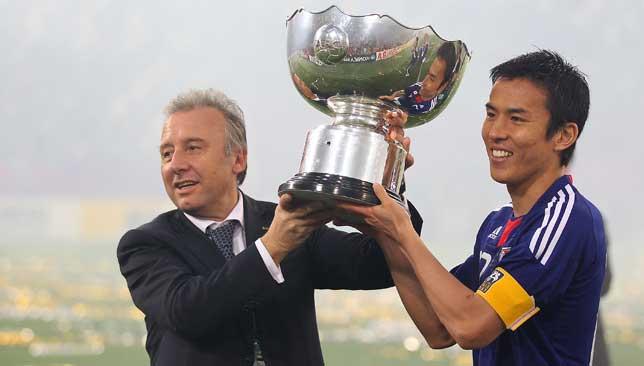
Recently I was asked why teams like Japan, South Korea and Australia get much more coverage in the English-language media than the likes of Saudi Arabia, Qatar (in terms of football not when it comes to hosting future World Cups obviously!) United Arab Emirates and other teams over on the west side of Asia.
There are various reasons: among them being that these are nations that consistently play in World Cups, especially since the explosion of the internet, and send players to the big European leagues which means there is usually more international exposure and interest. This comes with a more open attitude -in this writer's experience -to the foreign media that teams and federations in East Asia and Australia tend to have in contrast to the stress and frustration involved when dealing with many West Asian clubs, leagues and federations (even if this is improving in some areas).
In the end it comes down to success. Recent times have not been vintage ones for the west. Four years ago, football in the region was at a pretty low ebb when compared with the opposite end of the continent with 2010 the worst. The World Cup that year came and went with the rest of the football fraternity caring not a jot that Saudi Arabia were absent for the first time since 1990. They were also indifferent to the fact that Bahrain came so close to a first ever appearance and not interested in Iran's off-the-pitch issues. This is the way it is. If you are not there, you are nowhere.
And then, the Asian Champions League trophy was spending a fifth successive year in East Asia with Japan and South Korea developing a duopoly. These two countries were exporting their best players to the best leagues, able ambassadors weaving their magic on the pitch and their countries into the global football fabric.
That was bad enough but the 2011 Asian Cup, held in the region's back yard, was a disaster. No teams from the west survived the final eight and none were unlucky to fall by the wayside as Japan, South Korea and Australia set the standard and, as a result, the agenda of the international media. It seemed to confirm the spreading feeling that while there was political power in the Middle East, the talent came from elsewhere.
The west has fought back since. The 2011 Asian Champions League went to Qatar and Iran qualified for the Brazil World Cup. Overall, the level of football in the region is improving with an increasing number of teams favouring a fast, passing game. Whether it was ever simplistic enough to say that Asia used to be a battle between the physicality of the Arabian nations and the technique and speed of the east is highly debatable. It is certainly not true now.
What really produces respect and subsequent interest is winning. It also creates stars and the 2015 Asian Cup has ample opportunities for all these things. Logic suggests that with ten teams out of the 16 making that long journey to Australia, there is a pretty good chance of success. The very worst case scenario sees three teams in the last eight. The best has seven. Either way, there's going to be at least one West Asian team in the semi-final. The 2015 Asian Cup, held so many thousands of kilometres away, is already guaranteed to be better than the homegrown one of 2011.
There should be more, at least in the quarter-finals. Four would be fine, more would be truly impressive. In Group A, nobody expects Oman or Kuwait to block the passage of South Korea or Australia to the last eight and this lack of pressure should encourage the pair to play. They have nothing to lose and the big boys have plenty of issues.
Saudi Arabia could make the difference. If the Green Falcons get out of a tight Group B, as they have the ability to do, then West Asia is guaranteed half of the last eight. Should the Saudis, with an exciting midfield and if their attack can click, they can go all the way. Even if they don't, it will stand them in great stead for qualification for the 2018 World Cup.
Group C is an intra-regional affair with Iran cast as favourite, but especially the UAE and Qatar need to get out into the knockout stage for similar reasons to Saudi Arabia. Even if Japan come next, it is the kind of experience the talented teams need. But again, the talent is there. In the case of Qatar so is the form, and the belief should be too. At least one of Jordan, Iraq and Palestine will also make it and that will double in the unlikely event of Japan falling, or being tripped, at the first hurdle.
So the teams are there and the talent is too. Now it is time for the best to make real names for themselves. Some have started like Omar Abdulrahman of the UAE, thanks partly to his 2012 Olympics performance, others, like Iraq's Humam Tariq could really burrow themselves into the continental consciousness. The Saudis have the likes of Salem Al Dawsari and the already controversial 2014 AFC Player of the Year, Nasser Al Shamrani.
When it's all over Down Under, not only do some of these nations have to have stepped up to the plate, there needs to be new stars. There needs to be new names for the media to write about and for fans everywhere to read about. The future of West Asian football starts now.